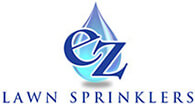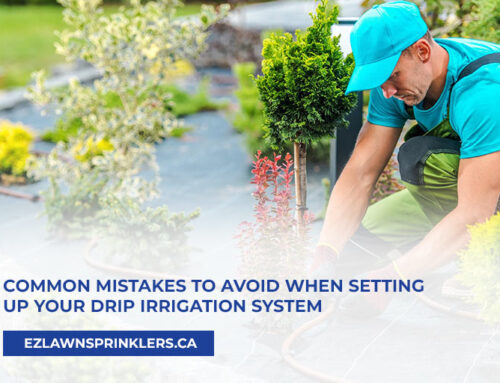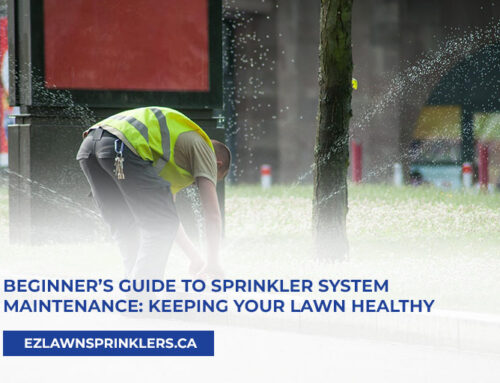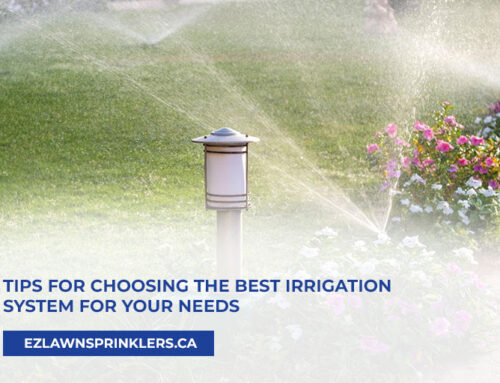Maintaining your lawn sprinkler system year-round is essential for keeping your lawn vibrant and healthy. As demand for efficient and automated irrigation systems continues to grow (driven by a broader shift toward sustainable water management practices, according to a market report) it’s clear that proper sprinkler care is more important than ever.
Regular seasonal maintenance not only keeps your system running smoothly but also helps you avoid costly repairs while conserving water. By following key maintenance tips, you can extend the life of your system and keep your lawn thriving all year long.
Spring: Reviving Your Sprinkler System After Winter
As the cold weather fades and spring begins, it’s time to wake up your sprinkler system from its winter dormancy. Ensuring everything is in working order now will help avoid issues during the high-demand summer months.
- Check for Leaks or Damage: Freezing temperatures can cause pipes and sprinkler heads to crack or shift. Inspect the entire system for any signs of damage, such as leaks or broken components, and replace them immediately.
- Test Water Pressure: Make sure the water pressure is set at the right level. Too much pressure can damage the system, while too little can lead to inefficient watering. Testing this early can help prevent uneven coverage later on.
- Adjust Sprinkler Heads: Over the winter, sprinkler heads may have shifted out of position. Adjust them to ensure they are covering the correct areas of your lawn, avoiding sidewalks or driveways.
Summer: Maintaining Peak Performance During High Use
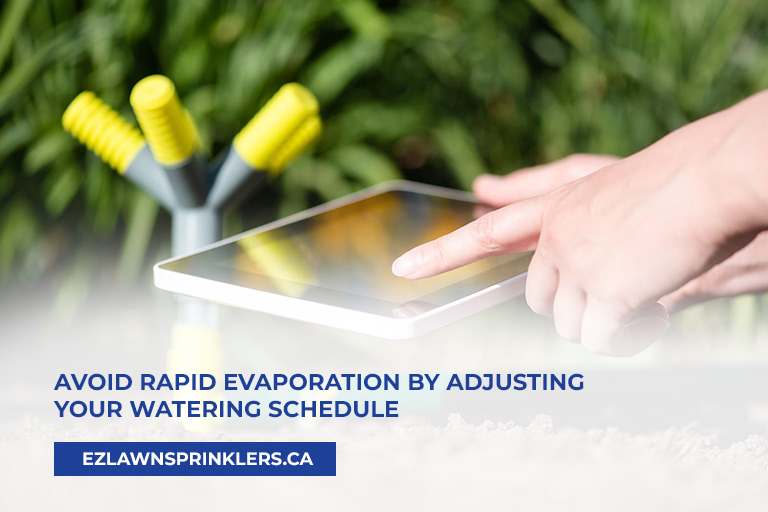
During the summer, your sprinkler system works harder to keep your lawn hydrated. Proper maintenance at this stage ensures the system performs optimally under increased demand.
- Inspect for Clogs: Dirt, grass clippings, and other debris can easily block sprinkler heads during summer. Regularly clean and inspect them to maintain even water flow and prevent dry spots from developing in your lawn.
- Monitor Watering Schedules: Adjust your system to water early in the morning or late in the evening, as watering during peak heat hours can cause rapid evaporation. This ensures water penetrates the soil more effectively and reduces waste.
- Check for Uneven Coverage: Over time, soil shifts and natural wear can cause some sprinkler heads to deliver more water to certain areas than others. Periodically check your lawn for signs of over- or under-watering and make necessary adjustments to the sprinkler heads for consistent coverage.
Fall: Preparing for Cooler Weather
As fall approaches and temperatures begin to drop, it’s important to get your sprinkler system ready for the colder months ahead. Proper preparation during this season helps prevent damage and ensures a smooth transition into winter.
- Reduce Watering Frequency: As the weather cools, your lawn requires less water. Gradually reduce your watering schedule to avoid over-saturating the soil, which can lead to fungus growth and other issues.
- Inspect Sprinkler System Components: Take this time to thoroughly inspect valves, sensors, and timers. If anything seems worn or faulty, consider consulting a sprinkler system installer for expert advice or repairs to avoid costly damages over the winter.
- Flush the System: Flushing out your sprinkler lines before freezing temperatures hit is crucial. Residual water in the pipes can expand and cause cracks or leaks, so it’s best to clear them out now to prevent damage.
Winter: Winterizing Your Sprinkler System
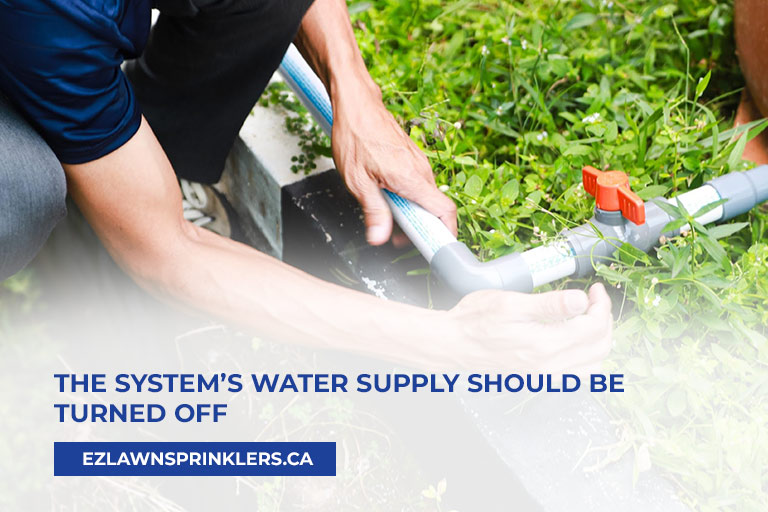
Winterizing your sprinkler system is essential to prevent costly damage caused by freezing temperatures. A few simple steps can protect your system throughout the cold months and ensure it’s ready for spring.
- Turn Off the Water Supply: To prevent any water from entering the pipes during the winter, which could freeze and cause them to burst, start by turning off the main water supply to the system.
- Drain the Sprinkler Lines: It’s crucial to remove any remaining water in the system. You can do this manually, or use the automatic drain feature if your system is equipped with one. In some cases, using compressed air to blow out the lines may be necessary for complete draining.
- Insulate Exposed Pipes: Any pipes or components exposed to outdoor elements should be insulated. Wrap pipes and backflow preventers in protective insulation to safeguard them from freezing temperatures.
If you notice any of these signs, don’t hesitate to contact a professional for assistance. Whether you need sprinkler repair in Toronto or an evaluation of your entire system, addressing issues promptly can help ensure your system operates efficiently and keeps your lawn healthy.
Signs Your Sprinkler System Needs Professional Attention
Even with regular maintenance, there may come a time when your sprinkler system requires professional intervention. Recognizing the signs early can prevent more extensive damage and costly repairs down the line. Here are some key indicators that it might be time to call in a professional:
- Uneven Watering: If you notice patches of your lawn that are either too dry or overly saturated, it could indicate a problem with your sprinkler heads or system layout. Professional help can ensure proper adjustments for even coverage.
- Visible Leaks or Puddling: If you see water pooling in certain areas or find visible leaks around pipes or sprinkler heads, this is a clear sign that your system needs attention. Leaks can lead to wasted water and increased bills.
- Low Water Pressure: A sudden drop in water pressure can signal blockages in the system or issues with the main supply line. A professional can diagnose the cause and restore optimal performance.
- Inconsistent Timer or Controller Functionality: If your sprinkler system’s timer is malfunctioning, it can lead to irregular watering schedules. A technician can troubleshoot and repair any issues with the controller.
- Damaged or Broken Sprinkler Heads: Cracked, broken, or misaligned sprinkler heads can affect the system’s efficiency. If you notice several heads that need replacing, it’s wise to consult a professional for a comprehensive inspection.
- System Age: If your sprinkler system is older and showing signs of wear, it may be time for a professional evaluation. They can assess whether repairs or a complete system upgrade is needed.
Keep Your Sprinkler System in Top Shape Year-Round!
With the right seasonal maintenance, your lawn sprinkler system can thrive through every season.
If you need assistance or a professional touch, don’t hesitate to reach out to EZ Lawn Sprinklers at (416) 580-3939. Whether you’re looking for installation or maintenance of your sprinkler system in Toronto, our experts are here to help keep your lawn lush and healthy all year long!
